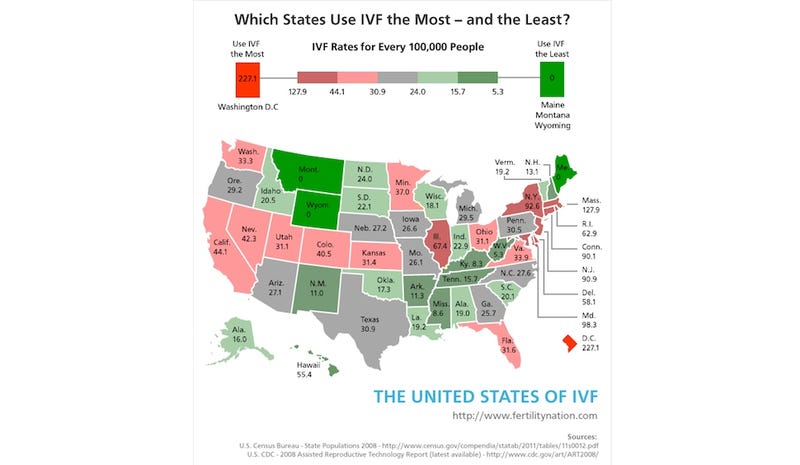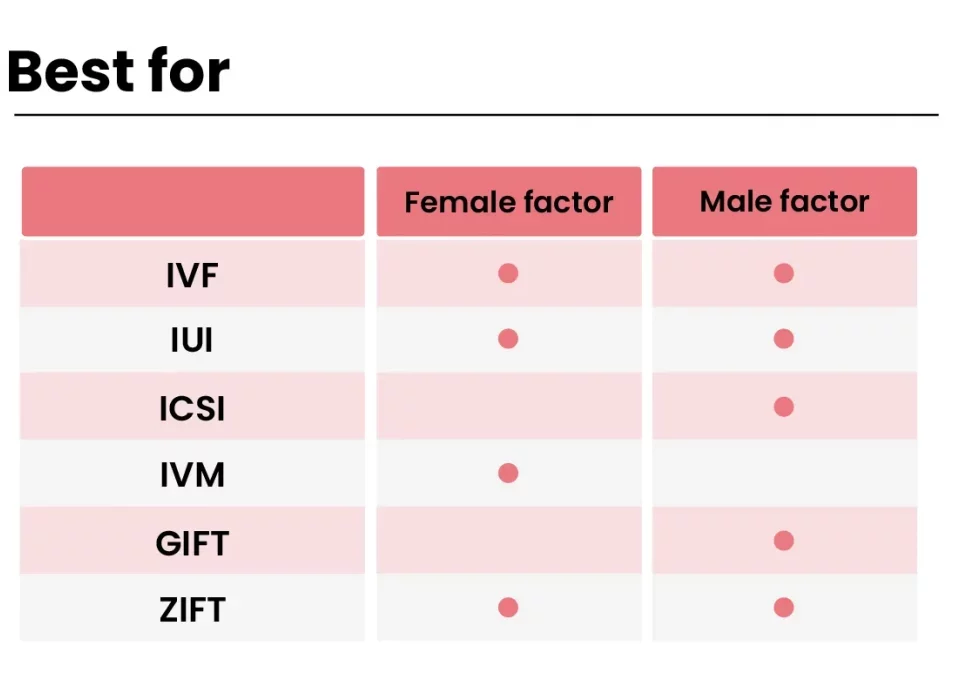What’s IVF? Your Ultimate Guide to In Vitro Fertilization
April 5, 2025
Can IVF Cause Cancer? What You Need to Know Before Starting Your Journey
April 5, 2025Is IVF Legal in All 50 States?

Is IVF Legal in All 50 States?
In vitro fertilization (IVF) has been a game-changer for millions of families across the United States. It’s a beacon of hope for those struggling to conceive, offering a path to parenthood that once seemed out of reach. But as amazing as this technology is, a question keeps popping up: Is IVF legal in all 50 states? If you’re asking this, you’re not alone—it’s a hot topic buzzing on platforms like X and trending in Google searches. The short answer is yes, IVF is legal everywhere in the U.S. as of April 2025. But the full story? It’s a bit more complicated—and way more interesting—than a simple “yes.” Let’s dive into what’s really going on, state by state, and explore the twists, turns, and latest updates that might affect your journey.
The Big Picture: IVF’s Legal Status Across the U.S.
Right now, IVF is legal in every single state. No laws outright ban it, and fertility clinics operate from coast to coast, helping people build their families. Whether you’re in California, Texas, or somewhere in between, you can access IVF services. That’s the good news! But legality doesn’t mean everything’s smooth sailing. State laws, court rulings, and even political debates can shape how easy—or hard—it is to get IVF where you live. Think of it like this: just because pizza is legal everywhere doesn’t mean every town has a pizzeria—or that the toppings are the same.
The catch? IVF’s legal landscape isn’t static. Recent events, like the 2024 Alabama Supreme Court ruling on embryos, have sparked fresh debates about what “legal” really means for IVF. Add in shifting state policies and the cost factor, and you’ve got a patchwork of rules that can feel overwhelming. So, while IVF isn’t banned anywhere, the details matter—a lot. Let’s break it down.
Why People Are Asking: The Alabama Shake-Up
If you’ve heard whispers about IVF’s legality, chances are they stem from Alabama. In February 2024, the state’s Supreme Court dropped a bombshell: they ruled that frozen embryos created through IVF have the same legal rights as children under the Wrongful Death of a Minor Act. This decision came after a lawsuit involving destroyed embryos at a fertility clinic. Overnight, clinics paused IVF services, worried they could face lawsuits or criminal charges if embryos were damaged or discarded during the process.
The fallout was instant. Families planning treatments were left in limbo, and the nation watched as Alabama scrambled to respond. Within weeks, the state legislature passed a law protecting IVF providers from legal liability, and clinics reopened. Crisis averted? Sort of. The incident lit a fire under discussions about embryo rights, and it’s got people wondering: could this happen in my state? Spoiler: it’s unlikely to ban IVF outright, but it’s a wake-up call about how fragile access can be.
State-by-State: Where IVF Stands Today
Since IVF is technically legal everywhere, you might think it’s all the same across the U.S. Not quite. Each state has its own flavor of rules, and those differences can hit your wallet, your options, and even your peace of mind. Here’s a snapshot of what’s happening in a few key places as of April 2025:
- Alabama: After the 2024 ruling, IVF is back on track with legal protections for clinics. But the embryo-as-person debate lingers, and some worry future laws could tighten restrictions.
- California: A fertility-friendly state with strong patient protections and insurance mandates for some infertility treatments (though not always IVF itself). Access is wide open here.
- Texas: IVF is legal, but the state’s strict abortion laws have raised questions about embryo disposal. Clinics are cautious, but services continue.
- New York: Another IVF hotspot with laws requiring certain employers to cover up to three cycles for women under 45. It’s a leader in making IVF accessible.
- Idaho: Legal, but no mandates for insurance coverage mean costs can be sky-high, limiting who can actually use it.
Across the board, IVF’s legality holds steady. But access? That’s where the real story lies—insurance, cost, and local regulations can make or break your experience.
Interactive Quiz: How Much Do You Know About IVF Laws?
Think you’ve got the basics down? Take this quick quiz to find out! Answer yes or no, then check your score below.
- Is IVF banned in any U.S. state as of April 2025?
- Did Alabama’s 2024 ruling permanently stop IVF in the state?
- Do all states require insurance to cover IVF?
- Can frozen embryos have legal rights in some states?
Answers: 1. No | 2. No | 3. No | 4. Yes (in Alabama, at least).
Score: 4/4 – IVF expert! | 3/4 – Solid grasp | 2/4 – Learning curve | 1-0/4 – Time to read on!
The Embryo Debate: A Hidden Threat to IVF?
Here’s where things get sticky. The Alabama ruling wasn’t about banning IVF—it was about embryos. But it opened a Pandora’s box. If embryos are “people” under the law, what happens when they’re frozen, donated, or discarded? About 1.5 million embryos are stored in freezers across the U.S., according to a 2023 estimate from the American Society for Reproductive Medicine (ASRM). During IVF, not all embryos make it to transfer—some don’t survive thawing, others aren’t viable, and many are left unused.
In states with strong “personhood” movements (think Alabama, Missouri, or Oklahoma), this could spell trouble. Laws meant to protect fetuses might accidentally—or intentionally—target IVF practices. For example:
- Freezing Embryos: Could it be restricted if embryos are seen as kids waiting to be born?
- Disposal: Might clinics face legal heat for discarding unused embryos?
- Donation: Could donating embryos to research or other couples become a legal minefield?
So far, no state has passed laws banning these practices outright. But the chatter on X and in legislative halls suggests it’s on people’s minds. A 2024 Pew Research survey found 70% of Americans support IVF access, yet 20% of those who believe life begins at conception are unsure about it. That tension could shape the future.
Real-Life Story: Sarah’s Frozen Dilemma
Take Sarah, a 38-year-old from Missouri. After two successful IVF cycles, she has three frozen embryos left. She’s done growing her family, but Missouri’s fetal personhood laws make her nervous. “I don’t want to destroy them and risk a lawsuit,” she says. “But keeping them frozen costs $600 a year, and I can’t afford that forever.” Sarah’s stuck—legally, her embryos are safe for now, but the uncertainty weighs heavy. Her story’s not unique; it’s a glimpse into how state laws can ripple into personal lives.
Insurance and Cost: The Real Barrier to IVF Access
Okay, IVF’s legal—but can you afford it? That’s the million-dollar question (or, more accurately, the $20,000 question per cycle). Only 19 states mandate some form of infertility coverage as of 2025, and even fewer include IVF specifically. According to RESOLVE: The National Infertility Association, states like Massachusetts and Illinois cover multiple cycles, while others, like Georgia, offer zilch. The average cost? $12,000-$15,000 per cycle, plus meds that can tack on another $5,000, per the ASRM.
Here’s a quick rundown:
| State | IVF Insurance Mandate? | Average Out-of-Pocket Cost |
|---|---|---|
| Massachusetts | Yes (up to 6 cycles) | $5,000-$10,000 with coverage |
| Texas | No | $15,000-$20,000 |
| New Jersey | Yes (up to 4 cycles) | $8,000-$12,000 with coverage |
| Florida | No | $15,000-$25,000 |
No mandate? You’re on your own. And even with coverage, copays and limits can sting. A 2024 study from Fertility IQ found that households earning over $100,000 are twice as likely to succeed with IVF—money talks, even when the law says yes.
Practical Tip: How to Navigate Costs
Strapped for cash? Try these steps:
- Check Your Insurance: Call your provider and ask about “infertility benefits”—even partial coverage helps.
- Look for Grants: Organizations like Baby Quest offer up to $15,000 for IVF.
- Consider Clinics with Payment Plans: Some offer financing or “IVF packages” to spread the cost.
- Travel Smart: If a neighboring state has better coverage, it might be worth the trip.
The Political Angle: What’s Next for IVF?
IVF isn’t just a medical issue—it’s a political football. Republicans and Democrats alike say they support it, but their actions don’t always match the rhetoric. In 2024, Senators Ted Cruz and Katie Britt pushed the IVF Protection Act, aiming to shield clinics from liability nationwide. Democrats blocked it twice, arguing it didn’t go far enough to protect patients. Meanwhile, bills like the Access to Family Building Act, backed by Dems, aim to lock in IVF rights but face GOP pushback over “overreach.”
On X, the debate’s heated. Some users cheer IVF as a “pro-life” win, while others fret about embryo rights clashing with fertility goals. Google Trends shows searches like “IVF laws by state” spiking since Alabama’s ruling, with folks digging for clarity. What’s clear? Politics could nudge IVF’s future—think funding cuts, embryo protections, or even federal bans if personhood laws gain traction “‘Embryo rights’ could complicate IVF access in conservative states,” warns a 2024 analysis from TIME.
Three Under-the-Radar Issues You Haven’t Heard About
The top Google articles cover legality and cost, but some juicy details slip through the cracks. Here’s what’s missing—and why it matters.
1. The Surrogacy Connection
IVF often pairs with surrogacy, especially for same-sex couples or women with medical risks. But surrogacy laws vary wildly. In Michigan, paid surrogacy was illegal until a 2024 repeal—IVF was fine, but using it with a surrogate wasn’t. Even now, only 25 states have clear surrogacy-friendly laws, per a 2025 ASRM report. If you’re planning IVF with a surrogate, your state’s stance could throw a wrench in things.
Action Step: Research your state’s surrogacy laws before starting IVF. Sites like Creative Family Connections break it down simply.
2. Clinic Regulations—or Lack Thereof
IVF’s legal, but oversight? Spotty. The federal government sets basic safety standards via the FDA, but states decide how clinics operate. In Ohio, a 2023 investigation found some clinics overstating success rates with zero penalties. Loose rules can mean great care—or shady practices. A 2024 CDC report noted 15% of clinics don’t fully report outcomes, leaving patients in the dark.
Fix It: Vet your clinic with the CDC’s ART Success Rates tool. Look for transparency and real patient reviews.
3. Frozen Embryo Storage Limits
Most states don’t cap how long you can freeze embryos, but a few are flirting with the idea. In Louisiana, a 2024 bill proposed a 10-year limit, citing “abandoned” embryos clogging storage. It didn’t pass, but the idea’s out there. If it catches on, you could face tough choices—use ‘em, donate ‘em, or lose ‘em.
Stay Ahead: Ask your clinic about storage policies and costs upfront. Plan for the long haul.
IVF Success Rates: What the Latest Data Says
Legality’s one thing, but does IVF work? The CDC’s 2023 ART Report (the latest full dataset) offers a peek:
- Under 35: 52% live birth rate per cycle.
- 35-37: 38%.
- 38-40: 24%.
- Over 40: 8% with own eggs, 40% with donor eggs.
New tech, like AI-driven embryo selection, is boosting those numbers—up 5% since 2020, per a 2024 Fertility and Sterility study. But success hinges on your state’s clinics, your age, and, yep, your budget.
Checklist: Boost Your IVF Odds
✔️ Pick a top-rated clinic (check SART.org for stats).
✔️ Optimize health—sleep, diet, and stress management matter.
✔️ Ask about preimplantation genetic testing (PGT) for healthier embryos.
❌ Don’t skip consults—rushing risks mismatched care.
❌ Avoid unproven “add-ons” unless research backs them.
Your Voice: Poll Time!
What’s your biggest IVF worry? Vote below and see where you stand!
- A) Cost—I can’t afford it!
- B) Legal risks—will laws change?
- C) Success—will it work for me?
- D) Ethics—embryos freak me out.
Results update weekly on our site—check back!
Unique Insight: The Rural IVF Gap
Here’s something you won’t find in most articles: rural areas get the short end of the stick. A 2024 Northwell Health study found 30% of U.S. counties—mostly rural—lack a single fertility clinic. IVF’s legal, sure, but if the nearest doctor’s three hours away, good luck. Telemedicine’s helping (think virtual consults), but egg retrievals and transfers? You’re still road-tripping. States like Montana and West Virginia are hit hardest, with travel costs adding $1,000+ to the tab.
Workaround: Look into “satellite clinics” partnering with urban centers or mobile fertility units—pilot programs are popping up in 2025.
Wrapping Up: IVF’s Future in Your Hands
So, is IVF legal in all 50 states? Yes, as of April 2025, it’s a green light nationwide. But the devil’s in the details—court rulings, insurance gaps, and political winds could shift the ground beneath your feet. Alabama’s wake-up call showed us access can wobble even when legality doesn’t. And with costs soaring and rural challenges growing, “legal” doesn’t always mean “easy.”
What can you do? Stay informed. Dig into your state’s laws, scope out clinics, and lean on support networks (RESOLVE’s got great resources). IVF’s a lifeline for so many—about 100,000 babies born yearly, says the CDC—and it’s worth fighting for. Whether you’re just curious or ready to start, knowing the lay of the land empowers you. Got questions? Drop ‘em in the comments—we’re here to help!

